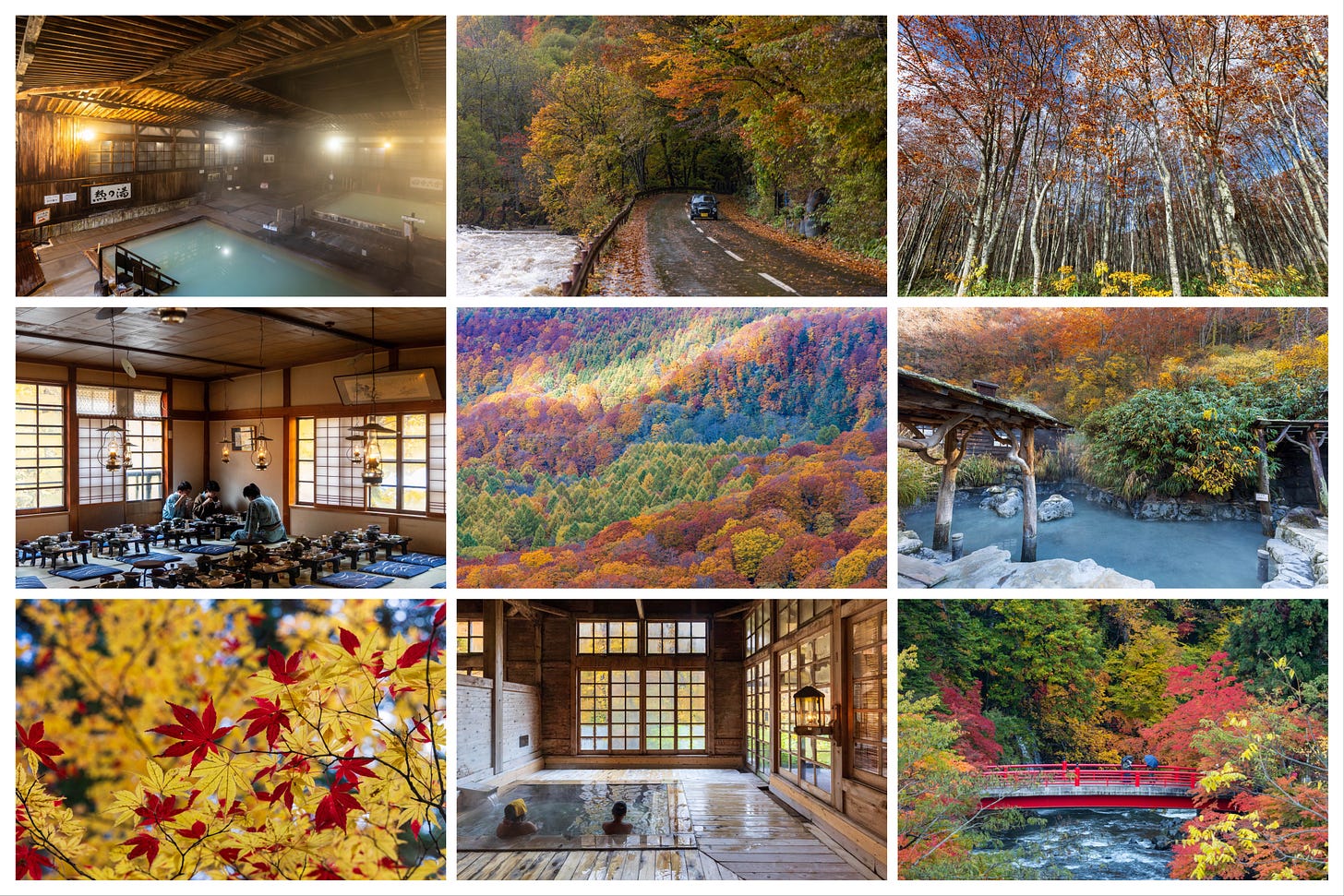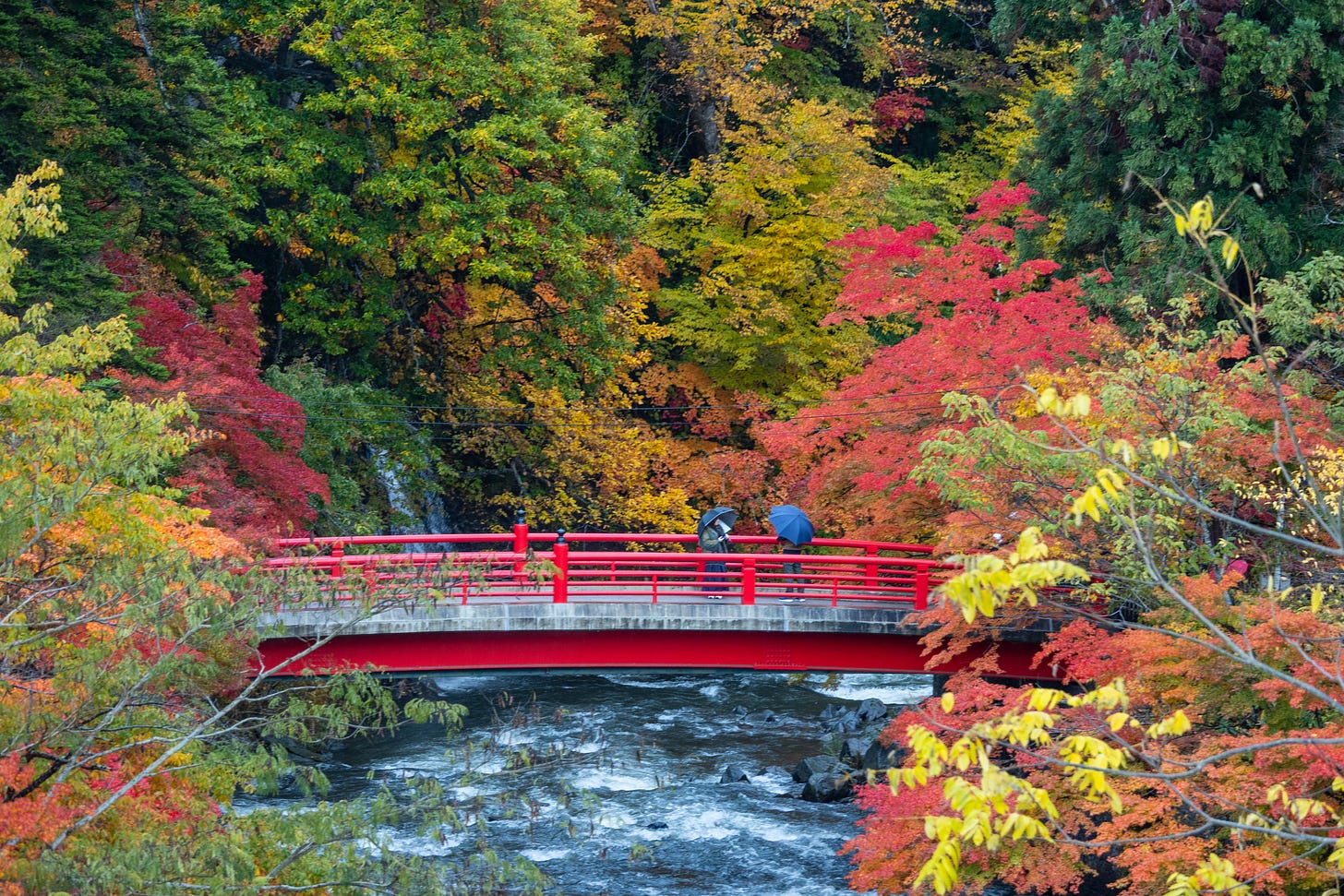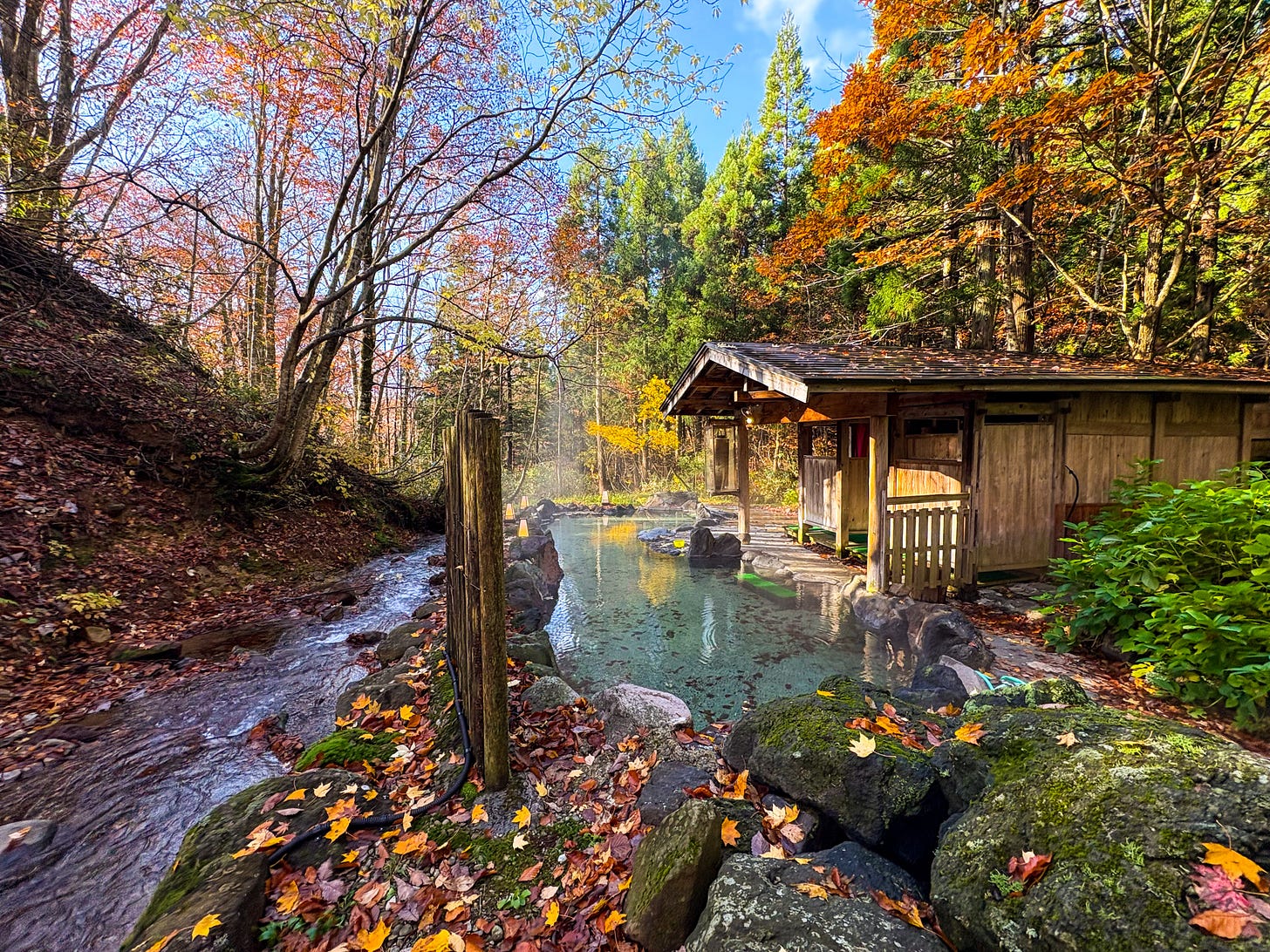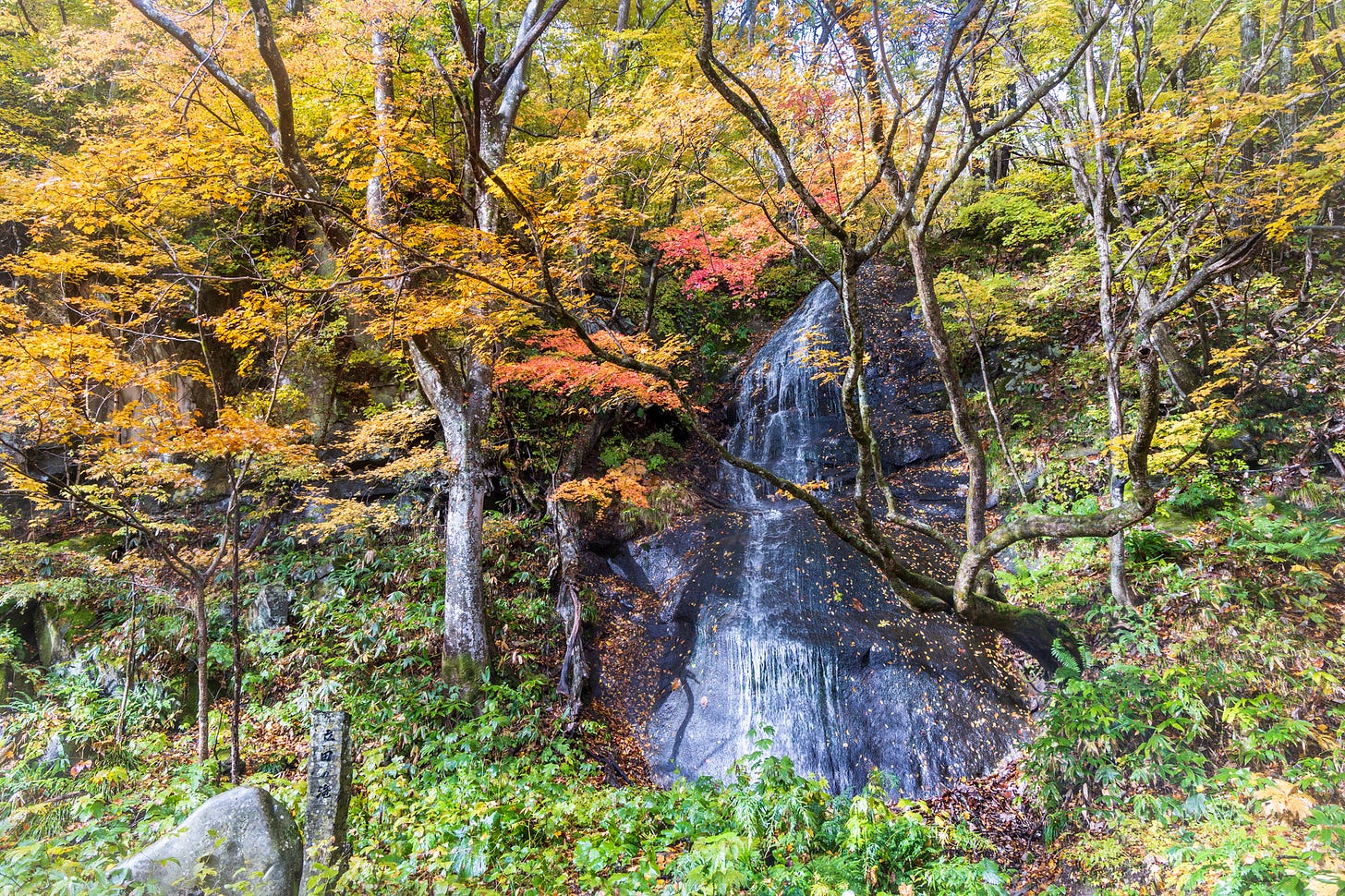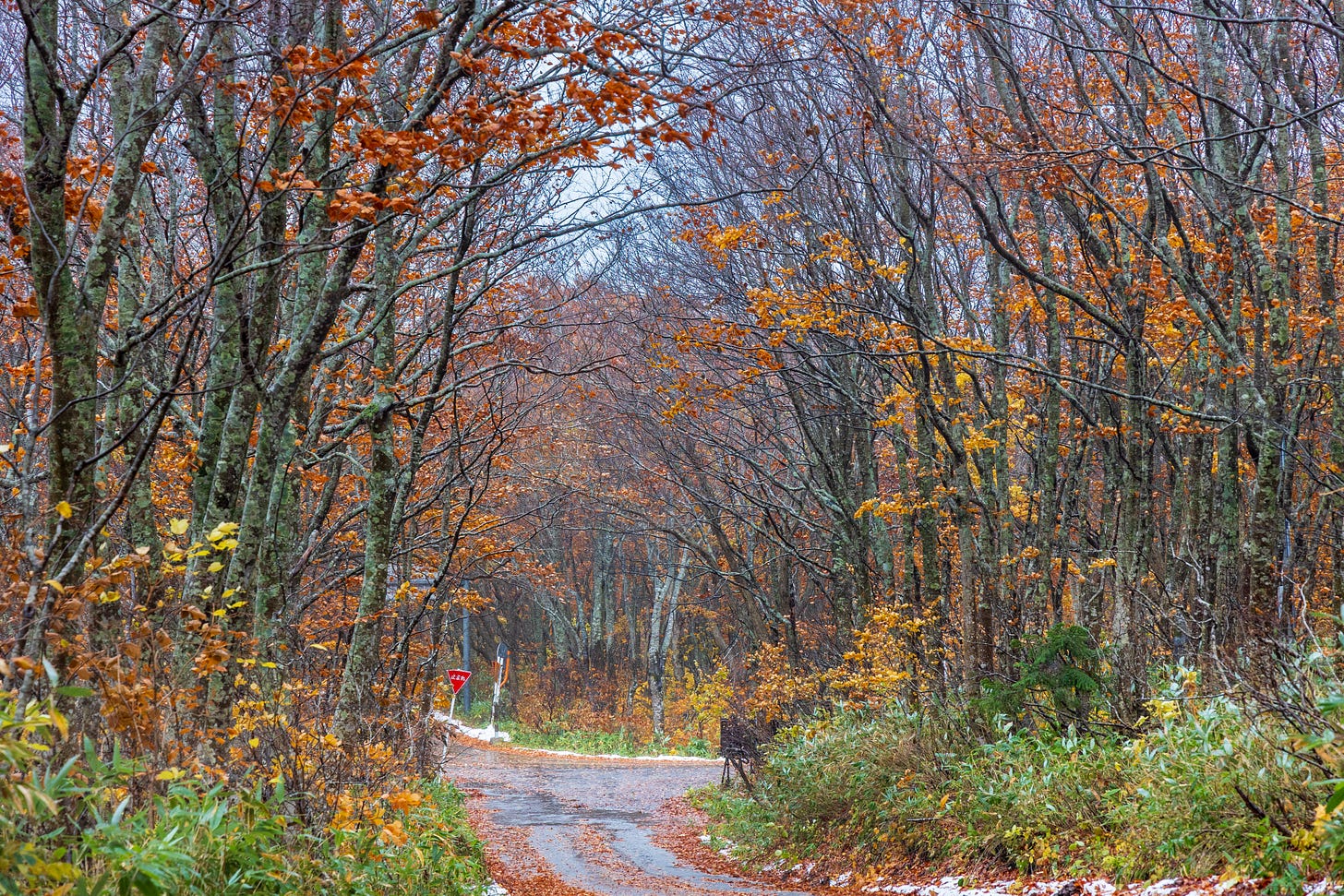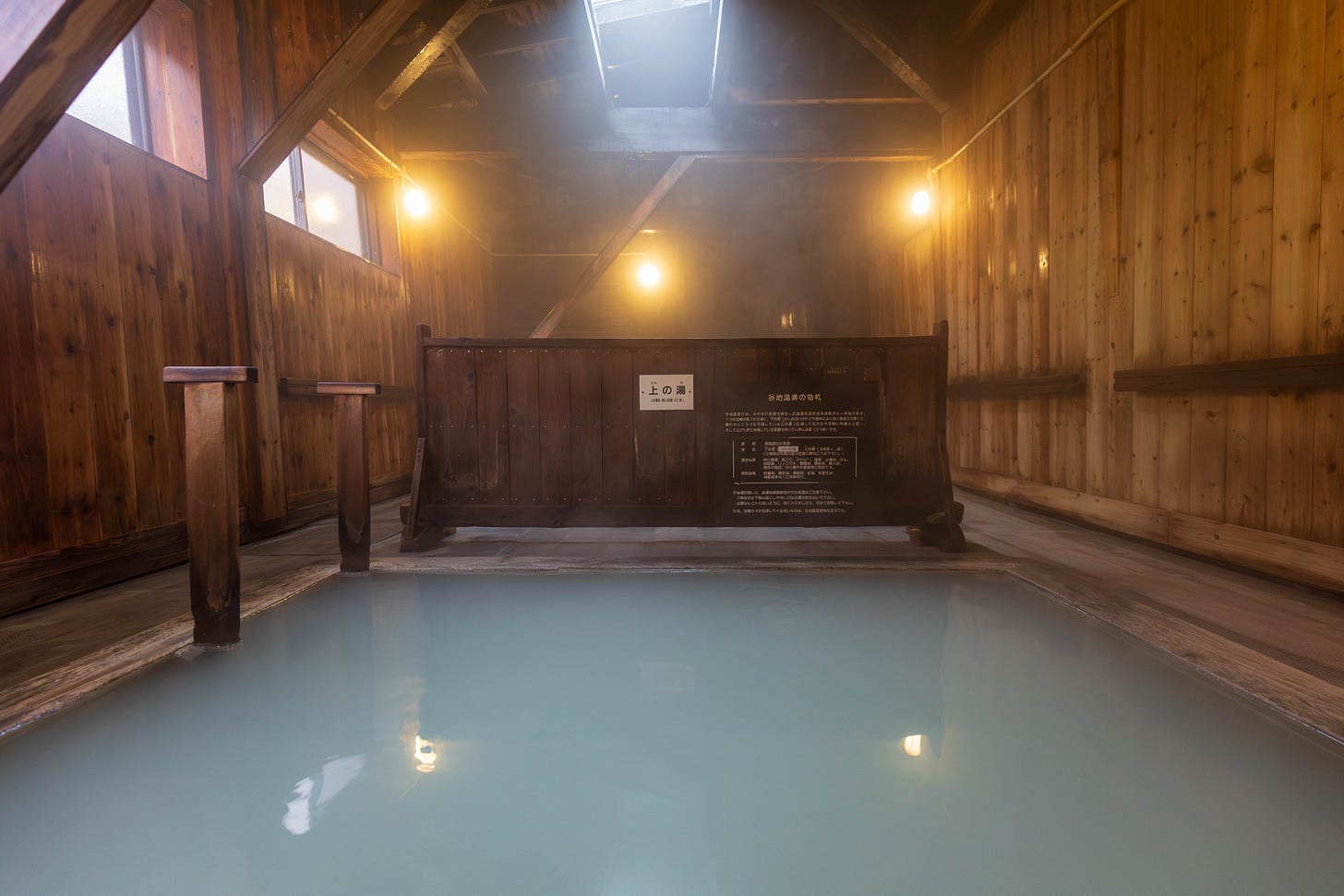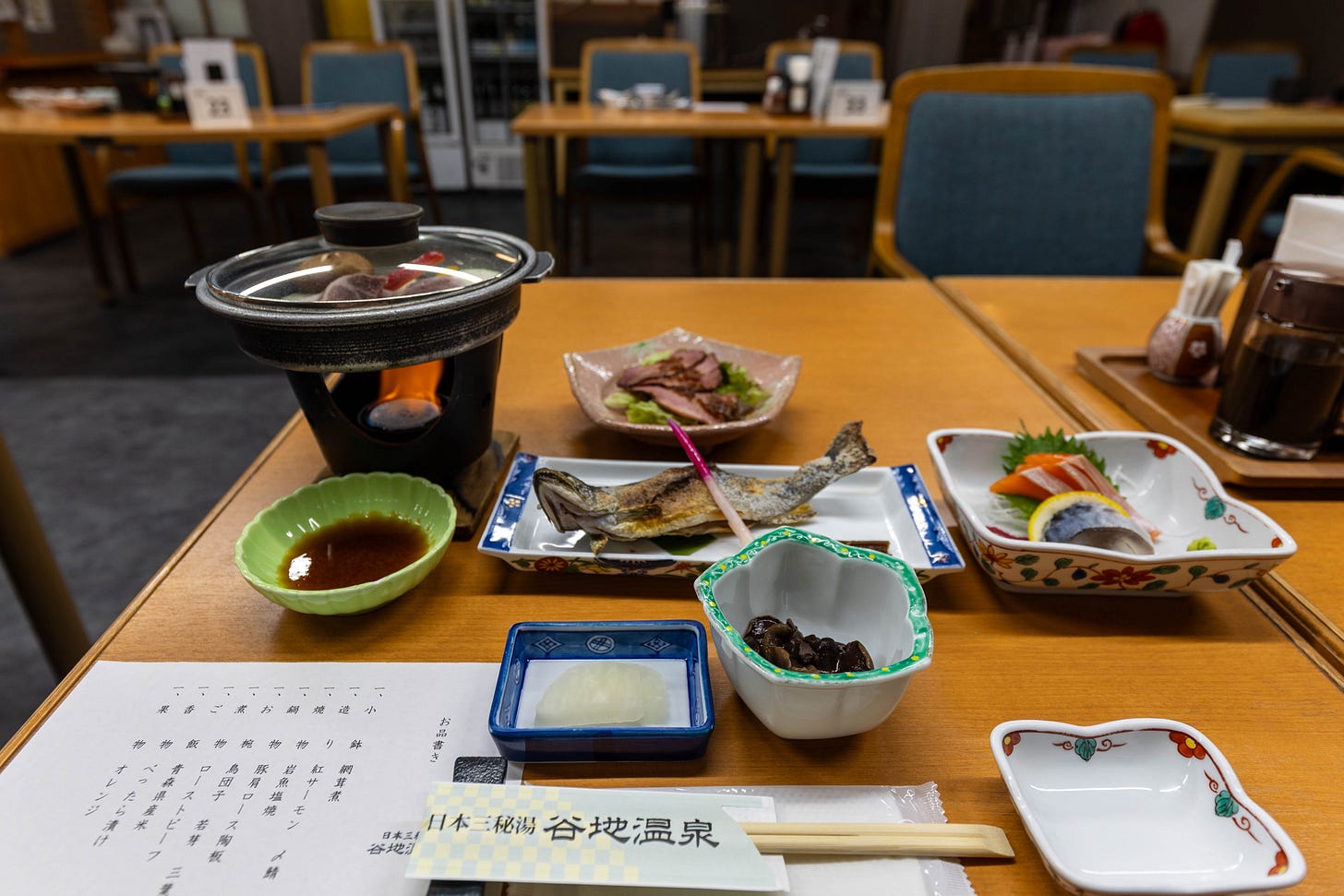Tohoku Onsen Hopping: Four Nights, Four Hot Springs
Travel diaries: five-day onsen hopping trip through Tohoku during the foliage season.
Good morning,
This autumn, cloudy and rainy weekends have far outnumbered the sunny ones in Tokyo. It is also noticeably colder than the previous autumns. While I hope late November will bring sunnier days to accompany the peak fall colors, I don`t mind this moody Tokyo weather, especially on this rainy Sunday, which set the perfect atmosphere for a cozy stay at home and finish this post, mentioned in last month’s letter, Seasons of Japan, which covers a recent onsen hopping trip through Tohoku, for monthly and annual subscribers.
During the five-day trip,1 I stayed at four different onsen ryokan located in Aomori and Akita Prefectures. There were also visits to the region’s famous foliage spots, all conveniently scattered between each inn.
This recent Tohoku trip was visually one of the most satisfying trips that I`ve taken in recent years. It offered many moments of soothing beauty - the expected and delightfully clichéd version of autumnal scenery - “elevated” by uniquely Japanese features.
But there were also moments of almost violent beauty, the kind you don’t quite know what to do with, the sort of beauty that makes you worry you’ll never be able to take it all in, a panic-inducing sort of way. A kind of beauty that I consider myself lucky to encounter once every five years, as its impact tends to stay with you for a lifetime, once initial anxiety is replaced with an inspiring sense of awe.
The weather in Tohoku was, as expected, much colder than in Tokyo, and quite action-packed. The meteorological menu commanding the five-day period included a heavy rain that partially flooded the bus stops and shut down stream-side trails, strong winds of the umbrella-stealing kind, and Blair Witch-level spooky but photogenic fog. The sun had also made occasional, very brief appearances. But those appearances felt almost divinely timed, as if someone had suddenly turned up the lights, to brighten up the most deserving scenery at the perfect moment, as if to say, “Here is your moment, don`t bother me for another five years.”
Following the same itinerary, and getting a little closer to sunnier days with each step, we’ll below first start with a tiny onsen facility in the Hakkoda Mountains that has that secret cabin-in-the-woods feel (without the eeriness), move on to a famous, or maybe a little infamous, one known for its vast bath, renowned as much for its milky-blue waters as for its mixed-gender bathing policy. Then we’ll spend a night at an electricity-free onsen that has often appeared in this newsletter, and finish the trip at another small inn converted from a former school in one of my favorite hot spring villages in Japan. Logistics-related details will be provided in the footnotes in relevant sections.2
Day 1 – Oirase Stream + Onsen Stay: Yachi
The first day of the trip, which started with the earliest Shinkansen departing from Tokyo bound for Tohoku, took me first to the Oirase Stream near Towada and then to a 400-year-old Yachi Onsen, tucked away in the dense woods of the Hakkoda Mountains in Aomori Prefecture.3
I had, a few autumns ago, already visited Oirase Stream for a two-day trip, and I would, honestly, not have included it in this trip’s itinerary if it weren’t already on the way to Yachi Onsen. While I do love the concept of repeat travels, as evidenced by the recurring appearances of certain locations in the newsletter, I never felt the urge to return to Oirase Stream for a second visit, for a rather strange reason: it felt too beautiful for its own good.
The stream and the hiking trail that accompany it is for sure an objectively (which may be the keyword here) stunning sight. I attempted to describe the beauty of this famous rocky and narrow stream nestled between dense forests of Aomori, home to approximately 14 different waterfalls, and which flows out to the equally picturesque Lake Towada as follows in one of the previous letters: “I never truly understood what “romantic scenery” actually means, but I suppose Oirase Stream in the fall must be as close as it gets.”
I probably subconsciously used the term romantic in a slightly pejorative way, to allude to Oirase’s picture-perfect, and therefore slightly predictable, beauty: the kind that fits within predefined parameters, feeling framed even in real time, long before it’s turned into a postcard, offering an experience akin to viewing the original of a particular painting in a museum, deeply satisfying, yet often complete with a single viewing, leaving you content to rely on reproductions or photographs to refresh the memory for the rest of the time.
But of course, I was wrong about that initial sentiment. The second visit to Oirase - consisting of a few hours of walking along the trail that runs right next to the stream - turned out to be a good reminder to dial down the arrogance a little and not to underestimate the power of “picture-perfect” beauty, the kind that can sweep you off your feet while demanding very little in return. That effortless, ready-to-consume beauty - the kind I once wrote a whole post about, and the role it played in developing my now insatiable appetite for travel.
My stop for the night required a one-hour bus ride along a mountain road. The trip could also be completed on foot in about six hours and would make for a wonderful day of roadside hiking, as the scenery along the way is spectacular, with leaf colors constantly shifting with altitude, showcasing every tone of yellow, red, and a little sad-looking brown. But a long hike through the mountains of Hakkoda requires not just leg power but nerves of steel, as the region is one of the densest bear territories in the country. And autumn is a particularly bad time for such an endeavor, as this is when bears tend to be most active, stocking up on food before the winter sleep. So, I had to enjoy the scenery from the bus.
I was the only one who got off the bus at the Yachi Onsen stop, which sits about five minutes from the inn, at the end of a narrow forest road. At this time of year, the surroundings had both a beautiful and slightly spooky atmosphere, which could easily make anyone inspired with movie ideas or recall the already existing ones - for me it was the movie The Others, featuring a house cut off from the rest of the world, a settting made even more haunting by a foggy forest alley that led to it.
All four onsen featured in this post have a unique quality that made them stand out for me. And for Yachi Onsen,4 despite the introduction, I can assure you it’s not the spookiness. Quite the opposite: it’s the coziness of the place, accentuated not only by the all-wooden architecture but also by the exceptionally warm trio of women hosts who made it feel so welcoming.
The rustic facility, whose thermal spring was discovered about four hundred years ago, has two bath areas. Unlike the ones at the next stop on our itinerary, those at Yachi are both gender-segregated,5 with specific hours reserved for women and men. Despite the inn being seemingly full, I had plenty of opportunities to have the bath all to myself, with a personal record of nearly 20 minutes staying in the water (shockingly short for many Japanese).
The dinner and breakfast were both served in a small dining room whose intimate size compensated for the overly bright lighting, keeping it from feeling like a refectory. The set menu featured seasonal mountain vegetables, sashimi, and grilled fish.
I believe there are around twenty rooms in Yachi Onsen, including both single and family-sized ones. You can also pick between Western-style or futon bedding. The rooms are old, but fairly well-maintained.
It was one of the coziest onsen stays I've ever had, which inspired me to plan another visit, but this time during the winter.


